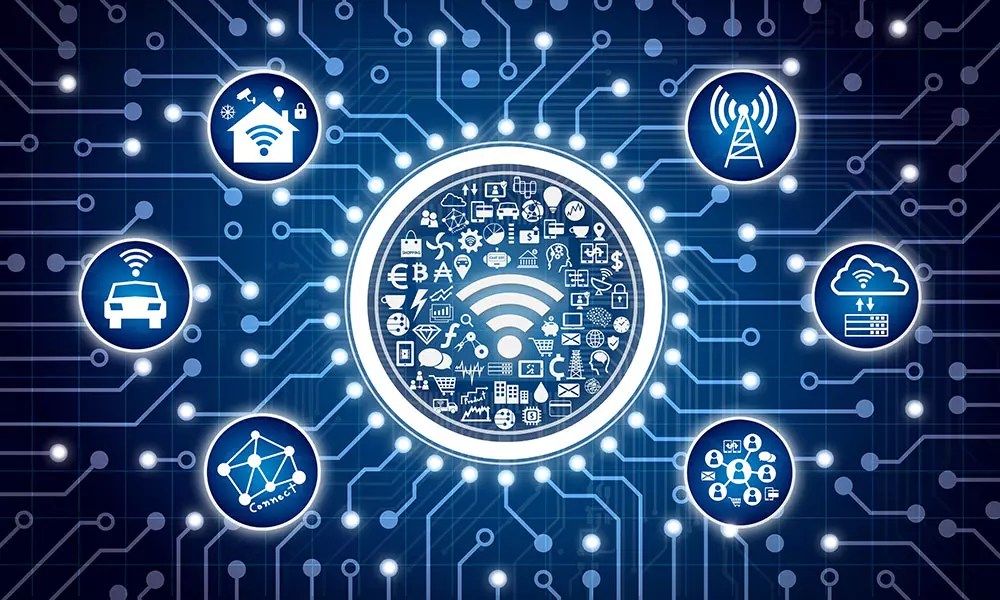How AI Can Unlock the Intelligent Internet of Things

The algorithmic organisation is an organisation built around smart algorithms. Algorithms that define company processes, that deliver customer services, that take action when necessary and as such define the way the world works. Thanks to machine learning and deep learning, these algorithms will be able to understand user and/or device behaviour, learn from users and/or devices and perform the right action accordingly. Algorithms will optimise your supply-chain, they will drive your cars, they will monitor your robots, they will determine the right marketing message, and they will even become your boss.
The algorithmic organisation has the potential to change society, and the recent developments are bringing us closer to the holy grail of artificial intelligence: Artificial General Intelligence (AGI), which means artificial intelligence as smart as mankind. Artificial general intelligence is becoming possible because of deep learning. However, deep learning requires tremendous amounts of data, which is exactly what the Internet of Things will deliver. Therefore, for us to reach AGI, a fully-functioning Internet of Things seems to be a pre-requisite.
The Internet of Things and Brontobytes
Currently, there are approximately 10 billion connected devices, with the number reaching 20 billion in 2020, 29 billion – 42 billion in 2022 and 75 billion in 2025. By 2030, we will have over 100 trillion connected sensors, and in 2035, the prediction is that we will interact with a connected device every 18 seconds, or 4800 times a day. Whether these numbers are correct or not, the fact is that the number of connected devices will increase exponentially in the coming years. With that, the amount of data that we will create annually will explode, easily driving us into the era of the brontobyte.
All that data will be fed into ever more sophisticated algorithms, that will use it to improve its internal capabilities to manage those trillions of interactions, find patterns, detect anomalies and discover meaning. So, not only will the data help us develop ever more advanced algorithms, but the algorithms are also required if we want to make the Internet of Things work because, without this intelligence, the Internet of Things will not be very smart.
Connected devices do not automatically mean intelligent devices
A network of connected devices that are not context-aware will not offer many benefits for the end user, whether this end user is an individual, organisation or thing. A connected device needs to be able to understand its environment, for it to offer true value to its user.
Let’s take the example of a self-driving car; A self-driving car that can navigate autonomously can be very useful, it can replace a human, and if it is good at detecting its environment, it can do so safely. However, when a self-driving car would be able to interact with its environment and derive meaning from that, it becomes a lot safer; if it knows that the cars in front of it are braking, it can take pre-emptive actions or if it knows that the traffic light will be red when it arrives, it can take action accordingly. Sure, it could ‘see’ this information using its sensors, but if it is connected to the other cars around it, it can communicate with them, and they can collectively define the best action for all users on the road, instead for just itself.
What applies to self-driving cars, will apply to most connected devices as well. If it understands its environment, if it is context-aware and can communicate intelligently with other relevant devices, it can make better decisions based on all the different variables in that context. That is where artificial intelligence comes in.
Unlocking the Intelligent Internet of Things
The power of the Internet of Things lies in the insights that can be derived from the data created by those connected devices. Only when machine learning is powerful enough to find relevant patterns, anomalies or correlations can we benefit from the Internet of Things. When that happens, we will create the Intelligent Internet of Things and slowly examples of the Intelligent Internet of Things are appearing that show us the use cases and benefits:
- Predictive maintenance: Based on the usage of the connected device, predictive and prescriptive analytics can detect possible equipment failure before it actually happens. This will ensure that the broken connected device will not corrupt the network and negatively affect other connected devices;
- Increased operational efficiency: Deep insights uncovered by machine learning algorithms can be turned into precise predictions of how the connected device can be best used, based on the requirements of the context. By doing so, Google managed to cut down its energy bill of its data centres by 40%.
- New revenue streams: The patterns and insights detected in the vast amount of IoT data can be exploited by organisations that own the connected devices. The insights can be sold to other organisations that can benefit from it. Rolls-Royce, for example, uses AI to detect how fuel can be saved and sells those insights back to airlines.
- Better predict (health) risks: Insights from wearables can be used to detect a variety of health problems that could indicate potentially life-threatening situations that otherwise would remain undetected. Fujitsu, for example, uses AI to detect stress levels through wearables worn by employees.
These are only four examples of the Intelligent Internet of Things, but more will showup in the coming years.
Final Thoughts
The Internet of Things is said to be a $19 trillion opportunity, but this value will only be unlocked if the Internet of Things can become the Intelligent Internet of Things. Only when connected devices apply artificial intelligence to understand their context and determine their decisions in this context, can we unlock the value attached to the Internet of Things. Until then, we are left with connected devices that might offer us some insights and usefulness but will not significantly improve our lives or our work.





